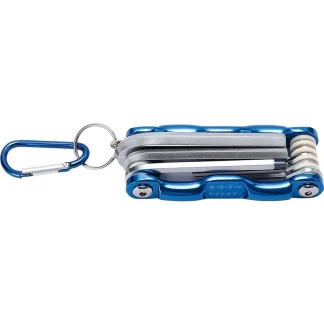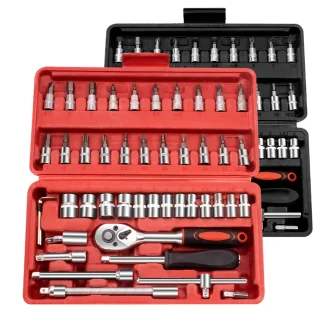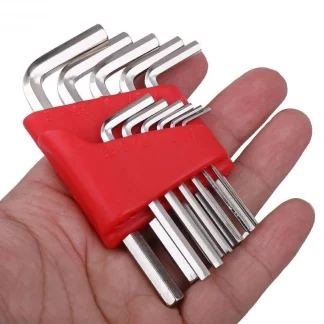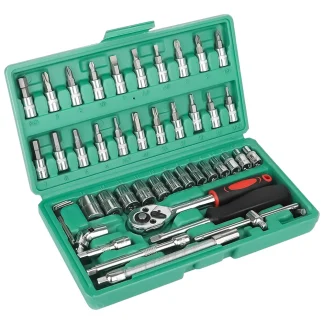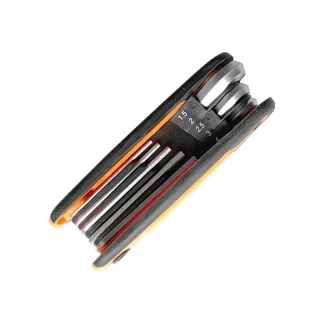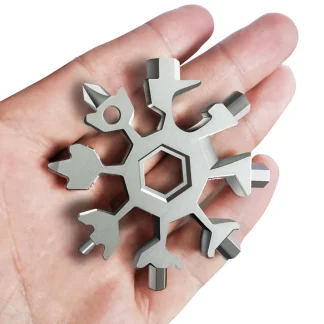The Essential Tool: Unraveling the Mystique of the Allen Wrench
Delve into the world of the Allen wrench, an indispensable tool that marries functionality with simplicity in design. Known for its unique hexagonal shape, this tool is a staple in the realms of assembly and maintenance, providing users with an efficient means to tighten or loosen fasteners with ease. Whether you are a DIY enthusiast, a professional tradesperson, or someone who simply enjoys assembling furniture, these products are a must-have in your toolkit.
The Evolution of the Allen Wrench: From Inception to Ubiquity
These items have a fascinating history that dates back to the early 20th century. Invented by the Manufacturing Company in 1910, the tool was designed to provide a more efficient way to drive screws with hexagonal sockets. Initially, it catered to the needs of various industries, allowing for easier assembly and disassembly of machinery components.
As industries evolved, so did the applications of the Allen wrench. By the mid-20th century, it gained widespread popularity in the furniture assembly industry, particularly in ready-to-assemble (RTA) furniture. This transition marked a pivotal moment for these pieces, solidifying its place as a household name and a fundamental tool for both professionals and amateurs alike.
In recent years, the versatility of these pieces have expanded even further, with numerous variations developed to accommodate different sizes and shapes of fasteners. Today, you can find these items in various sizes and configurations, ensuring they remain relevant in a broad array of applications, from automotive repair to electronics assembly.
The Cultural Significance of the Allen Wrench
The Allen wrench holds a significant cultural place, symbolizing the DIY movement and the growing trend of self-assembly. In many households, these items are synonymous with furniture assembly, representing a shift towards consumer empowerment and independence. It has become a symbol of personal achievement, enabling individuals to take control of their spaces by assembling and customizing their furniture.
In contemporary culture, these items have transcended its utilitarian roots to become a point of connection among DIY enthusiasts. Online forums, instructional videos, and social media platforms celebrate the art of assembly, showcasing how a simple tool can enable creativity and self-expression. These items embody the ethos of the DIY culture, encouraging individuals to embrace their capabilities and explore new possibilities.
Beyond the DIY community, the Allen wrench is often viewed as a representation of modernity and efficiency in manufacturing processes. In industrial settings, its use signifies precision and the pursuit of innovation, with manufacturers continually exploring ways to enhance tool designs for better performance and user experience.
The Design and Features of the Allen Wrench
The design of these products are characterized by its distinct L-shape, which allows for optimal leverage and torque application. Its hexagonal tip fits snugly into the corresponding fastener, providing a secure grip that reduces the likelihood of stripping the screw head. This ergonomic design enables users to apply significant force while minimizing the risk of injury or tool slippage.
Allen wrenches come in various lengths and sizes, catering to a wide range of applications. The short arm is ideal for tight spaces, while the long arm allows for increased leverage, making it easier to drive screws into difficult-to-reach areas. Many sets include multiple sizes, ensuring that users are prepared for any assembly task that may arise.
Some modern iterations of these items feature additional enhancements, such as ball-end designs that allow for angled access to fasteners. This innovation is particularly beneficial when working in confined spaces where a straight approach is not possible. These advancements demonstrate the ongoing commitment to improving tool functionality and user experience.
Innovations in Allen Wrench Design
Recent innovations in Allen wrench design have introduced exciting new features that enhance usability and versatility. One significant development is the incorporation of magnetic tips, which help hold screws in place while fastening, reducing frustration and improving efficiency during assembly tasks.
Additionally, the rise of socket pieces sets that include these products attachment reflects the tool's growing importance in various industries. These sets allow users to switch between traditional sockets and these pieces seamlessly, providing a comprehensive solution for tackling diverse tasks with ease.
Customization has also become increasingly popular, with some manufacturers offering personalized Allen wrenches that reflect individual styles or branding. This trend not only enhances the aesthetic appeal of the tool but also emphasizes its role as a staple in both personal and professional toolkits.
The Future of Allen Wrenches
The future of these items looks promising, with ongoing advancements in design and technology. As the demand for efficient and versatile tools continues to grow, manufacturers are exploring new materials and designs that prioritize durability and ease of use.
Sustainability is becoming a key focus in tool manufacturing, prompting companies to consider eco-friendly practices in the production of Allen wrenches. This trend reflects a broader commitment to responsible manufacturing while ensuring that tools remain functional and effective.
As technology continues to evolve, we may also see the integration of smart features in these items, such as sensors for torque measurement or compatibility with mobile applications that provide real-time guidance during assembly tasks. These innovations would enhance user experience and expand the possibilities of how we use this essential tool.
Choosing the Right Allen Wrench
Selecting the right Allen wrench involves considering factors such as the size of fasteners, the type of projects you'll be working on, and personal preferences. For general use, a set of multiple sizes is recommended, allowing for flexibility in handling various tasks. If you frequently work in tight spaces, consider opting for shorter or ball-end items to enhance accessibility.
The quality of these products can also impact performance. Investing in high-quality tools ensures longevity and effectiveness, providing peace of mind during assembly tasks. Consider brands that have a reputation for durability and precision to ensure that your tools will withstand regular use.
Ultimately, confidence in your choice of Allen wrench will enhance your experience and proficiency in assembly tasks, allowing you to tackle projects with ease and satisfaction. Embrace the efficiency and practicality of these items as you explore its many applications, making it an indispensable part of your toolkit.
Conclusion: The Timeless Utility of the Allen Wrench
These items exemplifies the perfect fusion of utility and simplicity, offering a reliable solution for tightening and loosening fasteners. Its evolution from a specialized tool to a household staple underscores its enduring appeal and significance in various contexts.
By understanding its history, design features, and future trends, you can appreciate the Allen wrench as more than just a tool—it is a symbol of innovation, craftsmanship, and the spirit of self-assembly. Explore the world of these products and discover the perfect addition to your collection, reflecting both practicality and style.
Whether for personal use or as part of a professional toolkit, a well-designed product provides unparalleled utility, ensuring that you can tackle any assembly challenge with confidence and efficiency. Embrace the timeless utility of these items and make it a treasured part of your tool collection.
